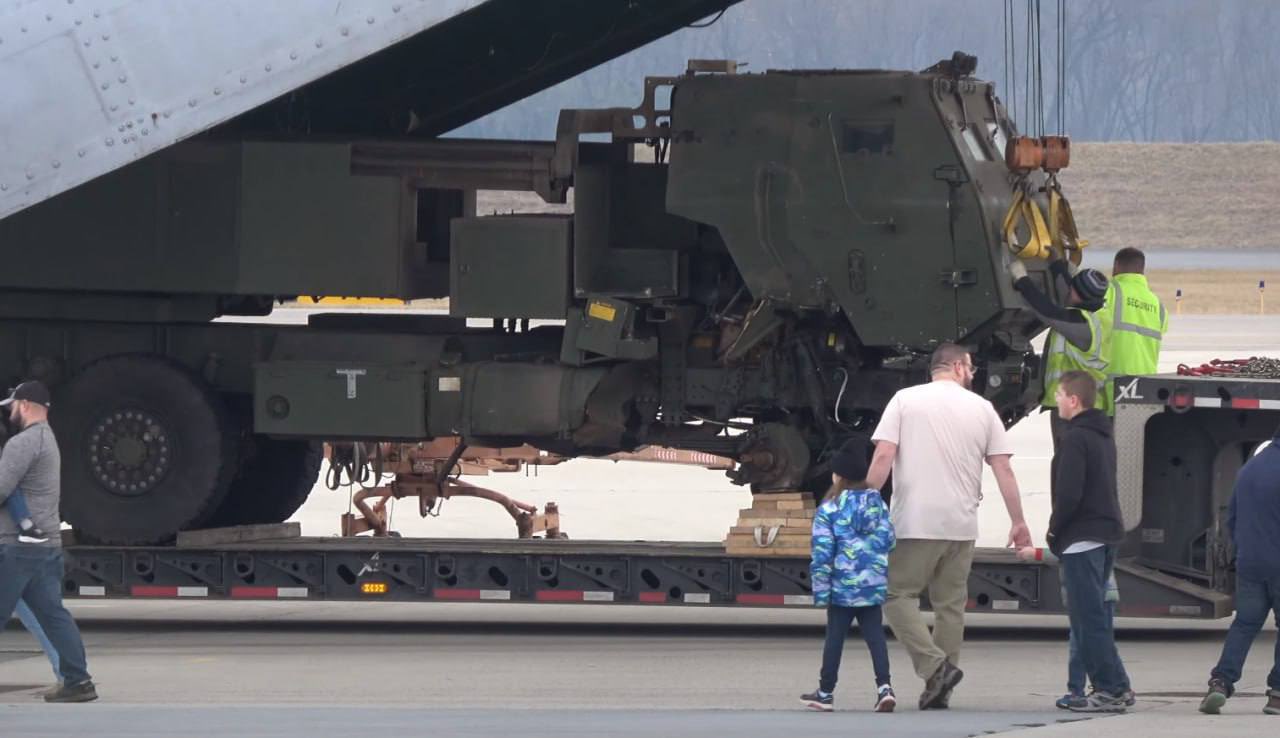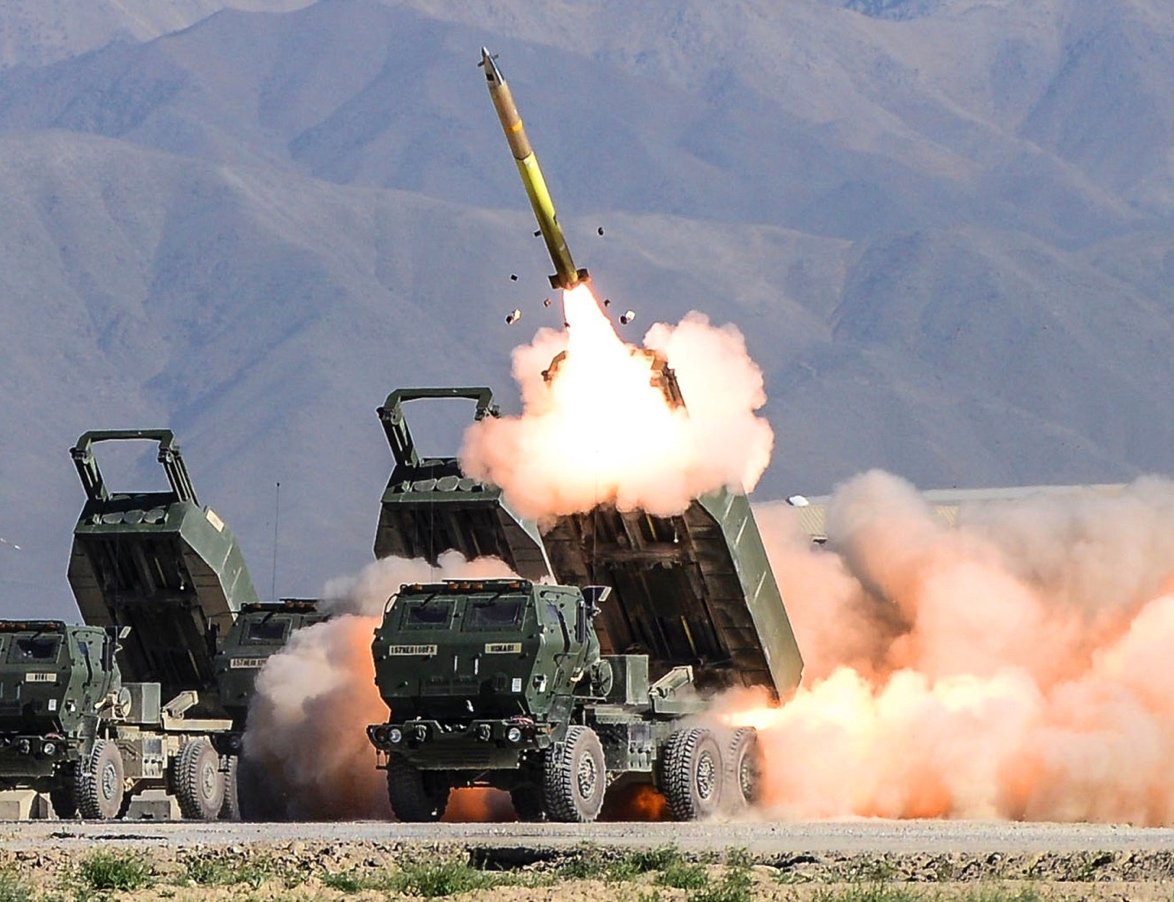According to videos and photographs surfacing on social media, two lightly damaged High Mobility Artillery Rocket Systems (HIMARS) have been transported back to the United States (US) for repairs.
The weapon was responsible for achieving success in forcing Russia to make a tactical withdrawal from a part of Kherson in November 2022 when Ukraine began targetting Moscow’s supply lines and logistical nodes deep in the rear.
Subsequently, the weapon appeared sparingly in military videos, while Russia reported rising shoot downs of HIMARS rockets with its Buk and Tor surface-to-air missiles (SAM).
‘No HIMARS Hit By Russia’
Interestingly, reports challenged the Russian claim about destroying HIMARS launchers, saying all of the 39 systems are intact.
This was because of the HIMARS crews’ secret, well-concealed movements and disciplined tactics to change locations after firing volleys. Russian artillery and air defense crews struggled to detect the HIMARS and coordinate fire.
“Ukraine’s HIMARS vex the Russian occupiers. In one recent series of strikes – one among many – the nimble launchers knocked out three Russian howitzers, a quartet of rocket launchers, and an air-defense vehicle,” the analysis on Forbes said.

Therefore, the emergence of pictures and videos of damage challenges the claim, proving the system has a mere tactical impact on the battlefield. It is also vulnerable as a whole, besides its rockets.
HIMARS Trucks Transported To US For Repairs
Handle ‘WarVehicleTracker’ posted a picture on X (formerly Twitter), showing a HIMARS launching vehicle being loaded onto a cargo aircraft.
“The first confirmed loss of a US-supplied M142 HIMARs MLRS, in the process of being loaded into an An-124 Ruslan. It seems to have suffered Shrapnel Damage but no direct hit, luckily. It will now be going to the US for repairs,” the handle said in the post.
The handle followed it with a second post, showing two HIMARS trucks observing “shrapnel damage” on the “first” HIMARS. That truck shows small but visible incisions on the rear right-hand side of the box rocket carrier and some hits on the window.
“The 2nd HIMARs seems like mine damage to the left tire, back of the cabin, PSU, and HULIU panels,” the post added. (It is the right tire and wheel, but that seems to be a typing mistake).
A longer video showed the An-124 arriving at Harrisburg airport in Pennsylvania and offloading the two HIMARS. One HIMARS is offloaded onto the back of a civilian truck from the rear cargo hold before it drives off. The front airframe around the cockpit too ‘folds up’ to reveal the other loading point – a signature feature of the An-124 and other planes like the US’s C-5 Galaxy.
Another truck pulls up before the rear hold, and the second HIMARS with the damaged front right wheel is lowered onto it with pulley cables. Interestingly, the three military vehicles – two trucks and a HUMVEE – with medium-size box containers on their carriers drive into the An-124 from the front ramp, possibly being unidentified military cargo.
Another cargo that climbed onto the An-124 was HUMVEE and a civilian-wheeled crane. The An-124 then closes its front section before taxing to take off. It is unclear where the military cargo was bound for – whether Ukraine or any other European country.
Assuming the HIMARS transported to the US are repaired and find themselves back in Ukraine in a few months. But even if they are intact, it still counts as a loss from a tactical perspective since two of the limited number of trucks would be unavailable from the battlefield for a considerable amount of time.
This is not to mention that Kyiv does not manufacture the rocket artillery system, and both the launchers and the M30 and M31 rockets come from the US Army’s stockpiles. The US defense industrial complex has long expressed the inability to ramp up production quickly to replenish the stocks sent to Ukraine.
HIMARS Recent Hits On Russian Targets
Ukraine officially released a video on February 14 of a HIMARS from its 14th Regiment destroying a Russian Buk air defense system “into molecules” in a strike that was carried out with “fire adjustment.”
Another video posted by the handle ‘Ukrainian Front’ shows the weapon system struck a Russian 4320 Ural truck and two Kamaz 5350 ‘Mustang’ vehicles in the Radensk, Kherson region village.
Two other videos from earlier this month only show the HIMARS firing and not striking any targets. The handle of United24, a Ukrainian government-backed media, and crowd-funding platform, posted a news clip showing access to a Ukrainian HIMARS unit.
The presenter said the M142 HIMARS “changed the course of the war in Ukraine at some point” and “continues to destroy targets at a strategic level.”
He challenged Russian media claims, saying, “None of the (HIMARS) systems have been destroyed…zero…thanks to its high mobility.” The “enemy artillery” is “just incapable” of spotting it, suggesting a quick ‘shoot and scoot’ tactic with HIMARS by Ukrainian soldiers – accurate to its intended design and orientation.

With the flood of homegrown and imported unmanned aerial vehicles (UAV) – purchased and those donated by US and European nations, a significant number would be used for target acquisition and surveillance. Some HIMARS might be part of a fire plan, prepared after observing targets for days if not weeks, and then releasing rockets at a reasonable time.
It does not appear that HIMARS is frequently being used to destroy large strategic targets, like ammunition depots, supply lines, or command and control centers, deep behind the Russian frontlines, like they were in late 2022.
However, what remains to be seen is whether the recent HIMARS strikes were part of more extensive coordinated ground actions or standalone attacks. This means that after a HIMARS attack, whether Ukrainian infantry, air force, or UAV and loitering munition followed it up with their attacks since they faced one less frontline Russian target.
- The author can be reached at satamp@gmail.com
- Follow EurAsian Times on Google News




